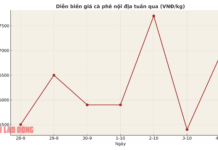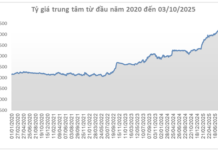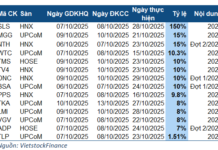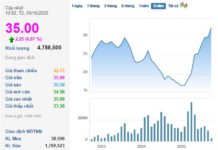The Vietnamese labor market faced significant challenges in the first three quarters of 2023, with job losses and reduced working hours affecting certain groups and industries such as textiles, footwear, and wood processing. According to the Ministry of Labor, Invalids, and Social Affairs, the number of workers who lost their jobs, had reduced working hours, or were underemployed due to order cuts reached over 500,000, including approximately 270,000 who became unemployed. As of the end of Q3 2023, there were still 118,400 unemployed workers in the country, while the number of furloughed workers decreased by 187,000.
2023: MARKET STABILIZATION AND RECOVERY
At the beginning of 2023, the government issued Resolution No. 06/NQ-CP on the development of a flexible, modern, efficient, sustainable, and internationally integrated labor market. The government recognized the vital role of the Vietnamese labor market, similar to financial, monetary, and real estate markets. The implementation of this resolution is a long-term strategy until 2030, with a vision towards 2045, requiring proactive coordination among ministries and sectors.
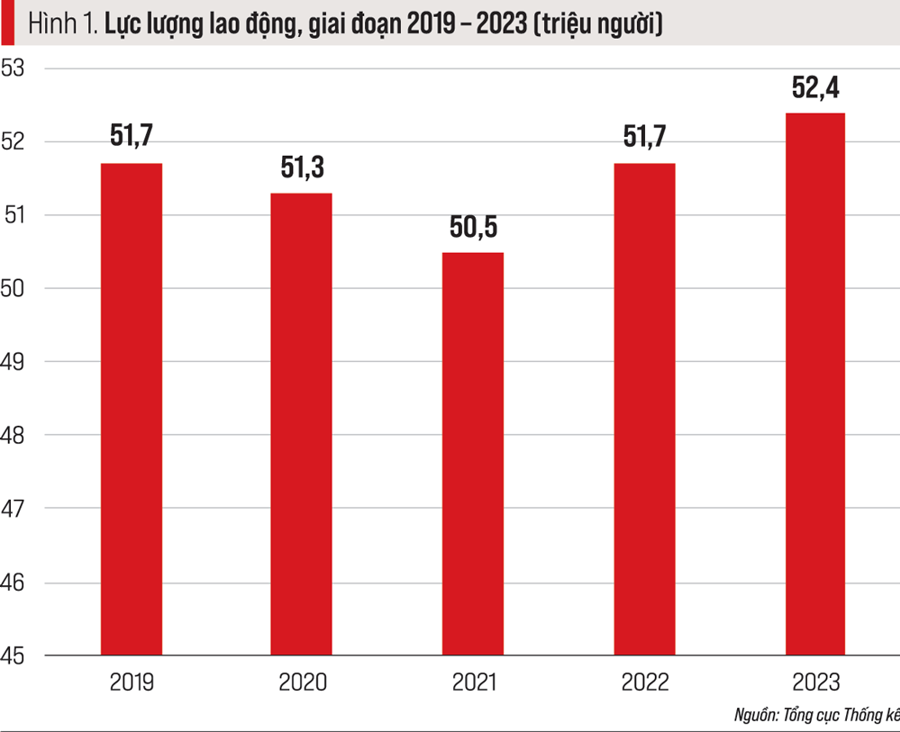
Following the resolution, the labor sector directed employment service centers nationwide to focus on connecting labor supply and demand and facilitating labor and job information exchange between provinces with abundant human resources and southern key economic regions. Investments were made in the labor market information system, especially in digital transformation and information technology applications for labor supply-demand connections. Efforts were also made to organize job fairs, expedite employment for workers, and accelerate the disbursement of loans for job creation.
The synchronized implementation of solutions under Resolution No. 01/NQ-CP dated January 6, 2023, aimed at economic recovery, yielded positive results, helping the labor market stabilize and gradually recover towards the end of 2023.
According to the General Statistics Office, the labor force aged 15 and above in 2023 reached 52.4 million people, an increase of 666,500 people compared to the previous year. Of this, 19.5 million people were in urban areas, accounting for 37.3%, and 32.9 million people were in rural areas, accounting for 62.7%. The female labor force reached 24.5 million, or 46.7%, while the male labor force was 27.9 million, or 53.3%.
The labor force participation rate in 2023 was 68.9%, an increase of 0.3 percentage points compared to 2022. The participation rate for males was 75.2%, an increase of 0.2 percentage points, while for females, it was 62.9%, an increase of 0.4 percentage points compared to the previous year.
Notably, the number of employed people aged 15 and above in 2023 reached 51.3 million, an increase of 683,000 people (or 1.35%) compared to 2022.
By economic sector, the number of employed people in agriculture, forestry, and fisheries was 13.8 million, a decrease of 118,900 people, or 0.9%, compared to the previous year. In the industry and construction sector, employment reached 17.2 million, an increase of 248,200 people, or 1.5%. The service sector employed 20.3 million people, an increase of 553,600 people, or 2.8%, maintaining the highest growth rate among the three sectors.
Regarding trained labor, the proportion of the labor force with qualifications or certificates in 2023 was 27.0%, an increase of 0.6 percentage points compared to the previous year. Notably, this rate in Q4/2023 was 27.6%, an increase of 0.3 percentage points compared to the previous quarter and 1.2 percentage points compared to the same period last year.
In terms of unemployment: In 2023, there were nearly 1.07 million unemployed people of working age in the country, a decrease of 14,600 people compared to the previous year. The unemployment rate for this age group was 2.28%, a decrease of 0.06 percentage points. The number of underemployed people of working age was 918,500, a decrease of 79,800 people compared to the previous year. The underemployment rate for this age group was 2.01%, a decrease of 0.2 percentage points. The underemployment rate in urban areas was lower than in rural areas (1.61% and 2.26%, respectively).
Comparing the underemployment rates for 2021, 2022, and 2023, it can be seen that the labor market was severely disrupted in 2021 due to the COVID-19 pandemic. In 2022, as the pandemic was brought under control, the underemployment situation improved and continued this positive trend until the end of 2023.
Regarding wages: The average monthly income of workers was 7.1 million VND, an increase of 6.9%, or 459,000 VND, compared to 2022. The average monthly income of male workers was 8.1 million VND, 1.36 times higher than that of female workers (6.0 million VND). The average income of urban workers was 1.4 times higher than that of rural workers (8.7 million VND compared to 6.2 million VND).
PRESSURES ON THE LABOR MARKET IN 2024
The statistical data on the labor market in 2023 mentioned above and comparisons with previous years show that the labor force aged 15 and above tends to increase annually. In 2010, when the population was about 87.5 million, the labor force aged 15 and above was over 50.5 million. In 2023, with a population of about 100 million, this labor force was 52.4 million. Vietnam is still in the golden population structure period, meaning that the working-age population (aged 15 to 64) accounts for a high proportion. According to demographic experts, this period could last until 2037. This indicates that Vietnam has a plentiful supply of young labor for the market.
Although the labor market in 2023 is recovering and stabilizing, considering other indicators, there are still pressures that could disrupt the market in 2024.
First, the number of informally employed workers, including those working in agricultural, forestry, and fisheries households, is very high. According to the General Statistics Office, the number of informally employed workers in 2023 was 33.3 million. The proportion of informally employed workers was 64.9%, a decrease of 0.9 percentage points and 1.8 percentage points lower than in 2022. The increase in the number of informally employed workers can be explained by the decline in orders from 2022 to the end of 2023, which severely affected the economy and the labor market, reducing the effectiveness of policies promoting the formalization of informal employment.
Second, the quality of labor supplied to the market falls short of the demands of a modern, flexible, sustainable, and integrated labor market. This pressure is reflected in the indicators for the trained labor force. In 2023, an estimated 14.1 million people received training and had qualifications or certificates, accounting for 27%. This means that more than 38 million workers remain untrained. It is also worth mentioning that, during the golden population structure period, young workers need training as they can easily absorb scientific and technical knowledge and be more flexible in career transitions.
Additionally, the severe shortage of highly skilled technical workers and high-end service workers in sectors such as commerce, finance, banking, and tourism poses significant challenges for a flexible, modern, efficient, sustainable, and integrated labor market. This highlights the challenge of enhancing workers’ professional and technical skills in 2024 and beyond.
Third, the structural shift between the agricultural, forestry, and fisheries sector, the industry and construction sector, and the service sector showed signs of slowing down in 2023 compared to 2020 and 2022 (2021 is not considered due to the clear impact of the COVID-19 pandemic). For example, the proportion of workers in the agricultural sector decreased by 1 and 1.6 percentage points in 2020 and 2022, respectively, while the corresponding increases in the industry and construction sector were 0.5 and 0.3 percentage points, and in the service sector, 0.5 and 1.2 percentage points. In 2023, the decline in these proportions slowed in all three sectors, at 0.6, 0.1, and 0.6 percentage points, respectively.
Fourth, the unemployment rate among youth in 2023 was 7.63%, slightly high. Notably, this rate was much higher in urban areas than in rural areas, while the proportion of rural youth not participating in education and training was higher than in urban areas.
Fifth, the number of underutilized workers in 2023 was about 2.3 million, or 4.3%. This pressure indicates the “mismatch” between labor supply and demand in the market and may reflect labor surplus issues and challenges in connecting supply and demand. Of course, there will always be underutilized workers in the market, and their number tends to increase when the market experiences economic and social shocks.
This article was published in the special edition “Economy 2023-2024: Vietnam & The World” on March 6, 2024. Please find the full edition here: https://postenp.phaha.vn/chi-tiet-toa-soan/tap-chi-kinh-te-viet-nam
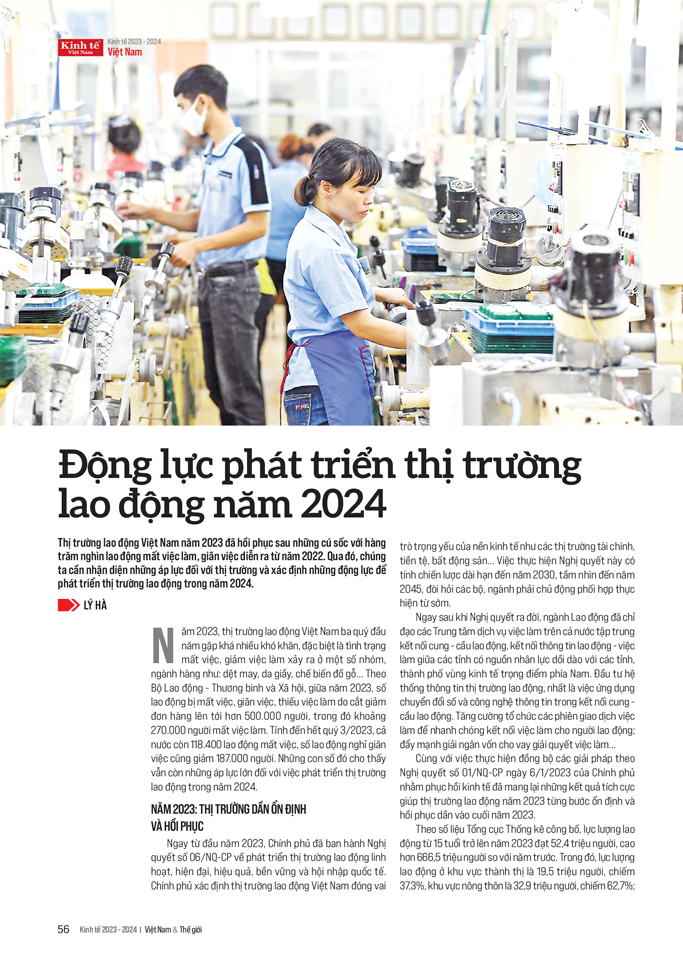
SGI Capital: “Cashless” message is valid for Vietnam but excessive and distorted expectations will become a trap for stock investors
According to SGI Capital, the declining and low interest rates of VND deposits are certainly stimulating a flow of matured funds to seek investment opportunities in asset channels, including stocks.




